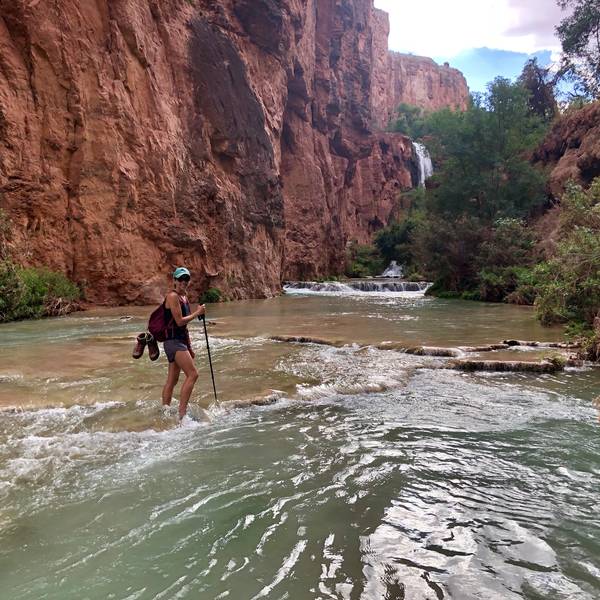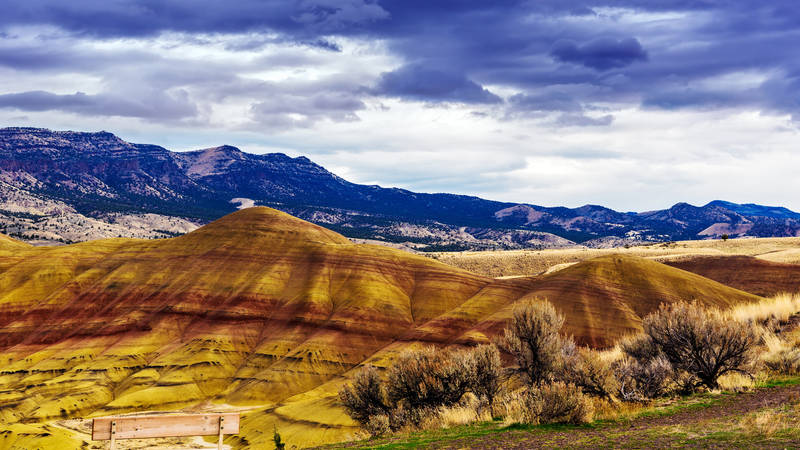National Parks Conservation Association and Nature Valley are working together to protect places in nature for everyone to enjoy – including land that comprises the Rim of the Valley in Los Angeles, California.
Through a new campaign in partnership with Nature Valley, National Parks Conservation Association (NPCA) is working to expand California’s Santa Monica Mountains National Recreation Area to include the Rim of the Valley, a region rich in natural and historical resources, so more families can experience a national park site just outside the Los Angeles city limits.
When you think about Los Angeles, you might think of traffic-filled freeways and a dense city skyline. But just a few miles from the heart of the city, nature awaits.

Protecting the Rim of the Valley
In Los Angeles’ backyard, just beyond the hustle and bustle of the city, a nature escape awaits. Watch this video by National Parks Conservation Association and Nature Valley.
See more ›The Rim of the Valley comprises 118,000 acres of land adjacent to Santa Monica Mountains National Recreation Area and represents an opportunity to protect some of the last wild lands and historic sites in the greater Los Angeles area — ensuring the land will remain accessible for all, for present and future generations.
For nearly a decade, NPCA has spearheaded the community-based Rim of the Valley Coalition to advocate for the Rim of the Valley’s national park designation. NPCA works to galvanize community support for federal legislation to establish the Rim of the Valley as a park by lifting up and amplifying the voices of Angelenos to secure protection of this land for the benefit of ecosystems and people alike.
Here are five reasons why this land should be protected within the National Park System.
1. The Rim of the Valley will make the world’s largest urban national park even more accessible.
The Santa Monica Mountains National Recreation Area is the world’s largest urban national park. It’s so big, it has 26 ZIP codes! Although the Los Angeles metropolitan area is the second most populated area in the country with more than 18 million residents, it has less open space than any other large urban area on the West Coast.

A Hiking Guide to the Rim of the Valley
An insider’s guide to exploring this region of California that could soon become part of the National Park System.
See more ›According to the LA County Park Needs Assessment, fewer than half of the county’s residents live within half a mile of a public park, particularly populations of color.
Additionally, existing parks lack quality natural space, with 58% of park amenities rated in “fair” or “poor” condition by residents and 80% of park infrastructure rated as “fair” or “poor.” The assessment also notes that Hispanic/Latino residents make up more than half (60%) of the people living in areas that have been prioritized for conservation and restoration due to environmental threats such as hazardous waste, poor air quality and pollution.
Protecting the Rim of the Valley will create more outdoor recreational opportunities for those living in low-income communities and communities of color in the Los Angeles area who don’t have access to nature. Nature should be accessible to all, and Angelenos deserve the opportunity to experience a national park without traveling far from the city.
2. The birthplace of Los Angeles and other historical resources related to Latino, Hispanic and other cultures will be protected.
The Rim of the Valley is rich in historic and cultural treasures that reflect the relationship between the land and Hispanic, Latino and other cultures. NPCA believes these nationally significant sites are worthy on inclusion in the national park system.
Protection of cultural sites within the Rim of the Valley will allow the Park Service to tell the fuller story of the region’s history, including El Pueblo de Los Angeles, the city’s birthplace. Forty-four original settlers of Native American, African and European heritage journeyed more than 1,000 miles to establish the farming community of El Pueblo de Los Angeles in 1781. This original Spanish settlement eventually grew into the current metropolis of Los Angeles.
Los Encinos State Historic Park represents the site where some of San Fernando Valley’s earliest dwellers made their homes. A natural spring provided a year-round source of water for the ancient village of Siutcanga, home to the Tongva people for thousands of years and recorded as part of the 1769 Portola Expedition. This Spanish expedition reached the San Fernando Valley and named it “El Valle de Santa Catalina de Bononia de Los Encinos” (The Valley of St. Catherine of Bononia of the Oaks). Today the park features exhibits related to the agricultural enterprises of Rancho Los Encinos’ various owners, including Mission Indian, Mexican Californio, French and French Basque families.
3. The Park Service will improve outreach and programming to build a new generation of national park enthusiasts.
The expanded presence of the Park Service will better connect youth and their families to the outdoors and facilitate new partnerships with schools, local governments and community-based organizations through outreach and interpretive programs. It also will allow for better coordination around the planning, development and management of appropriate recreation uses, including the development of new and expanded trail systems, campgrounds and other recreational resources.
People of all ages and backgrounds will be able to enjoy a place to breathe fresh air, explore nature with friends and family and learn about the plant and animal life that lives in the last remaining undeveloped land in Los Angeles.
4. Critical wildlife habitat will be preserved.
From the iconic mountain lion to the rare California red-legged frog, wildlife species will benefit from establishing the Rim of the Valley as a national park site. Red-legged frogs, for example, nearly disappeared from the local landscape, but their numbers have begun to recover thanks to captive breeding, reintroduction and habitat restoration efforts by the Park Service — an effort that will be enhanced by the proposed expansion.
Recently, the first black bear to travel south of the 101 freeway in over a decade was trapped, collared and tracked by the Park Service within the proposed expansion area. Habitat restoration within the Rim of the Valley will also help the region’s threatened mountain lion population. A recent study found these animals could disappear from the local landscape in as little as 50 years unless steps are taken to protect wildlife corridors and improve habitat connectivity. This, in turn, will benefit several ecosystems critical to sustaining California’s distinctive biodiversity.
5. Landscapes and plant communities found nowhere else in the world will be protected.
Most of California lies within a biodiversity hotspot called the California Floristic Province, one of only 36 such hotspots in the world. More than one-third of the province’s plant species are only found in the Santa Monica Mountains, including globally rare species and important plant communities that are also found in the Rim of the Valley.
The protection of these natural resources — including chaparral, southern oak woodland, coastal sage scrub, coastal dune, grassland and wetland plant communities — are important to maintaining California’s ecology. They also provide significant public health and economic benefits, as well as research and educational opportunities.
The proposed Rim of the Valley expansion will allow the Park Service to conduct extensive research and implement appropriate strategies for removing invasive species, restoring native habitat and protecting wildlife corridors.
We are so close!
As a result of tireless efforts by NPCA and our partners, federal legislation to establish the Rim of the Valley is now poised to preserve this area for future generations. Legislation to establish the Rim of the Valley was first introduced in 2017 by U.S. Sen. Dianne Feinstein and U.S. Rep. Adam Schiff.
Stay On Top of News
Our email newsletter shares the latest on parks.
Today, it is one of the few pieces of legislation to receive bipartisan support both locally and in the halls of Congress. A bill introduced by U.S. Sen. Alex Padilla was passed by the Senate Energy and Natural Resources Committee with support from both parties in 2023. In the House of Representatives, NPCA supports efforts by Schiff and U.S. Rep. Mike Garcia to pass its own version of the bill.
But time is running out.
For the Rim of the Valley to become a reality, the legislation needs to pass both chambers of Congress and be signed into law by the end of the 2024. National park lovers can do their part by contacting their congressional representatives and requesting their support for Senate Bill 1466 and House Bills 5881 and 2887. We have an opportunity to take immediate steps to protect the land’s invaluable natural and cultural resources, while expanding recreational and educational opportunities for the people of Los Angeles and beyond. Let’s do it.
About the author
-
 Alana Garibaldi Manager, Strategic Partnerships
Alana Garibaldi Manager, Strategic PartnershipsAs the manager of corporate partnerships and cause marketing, Alana connects like-minded companies to NPCA’s work, creating collective impact for our parks.
-
General
-
- NPCA Region:
- Pacific
-
Issues


